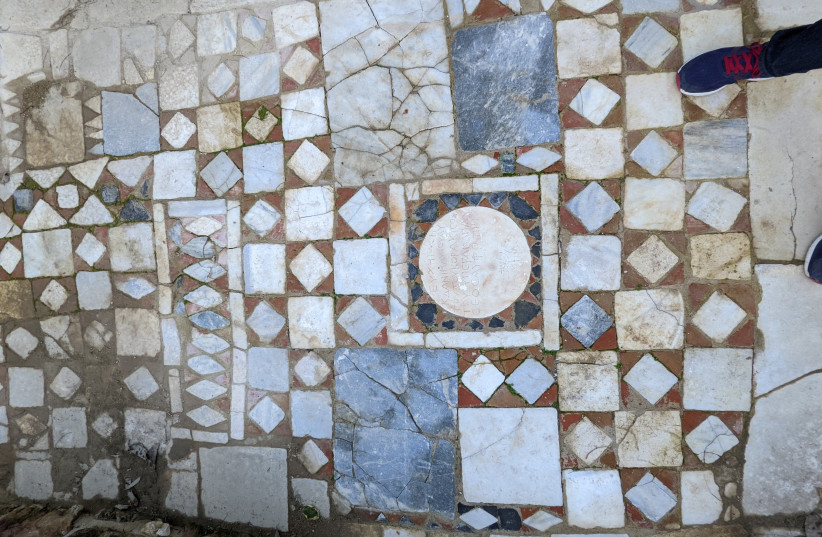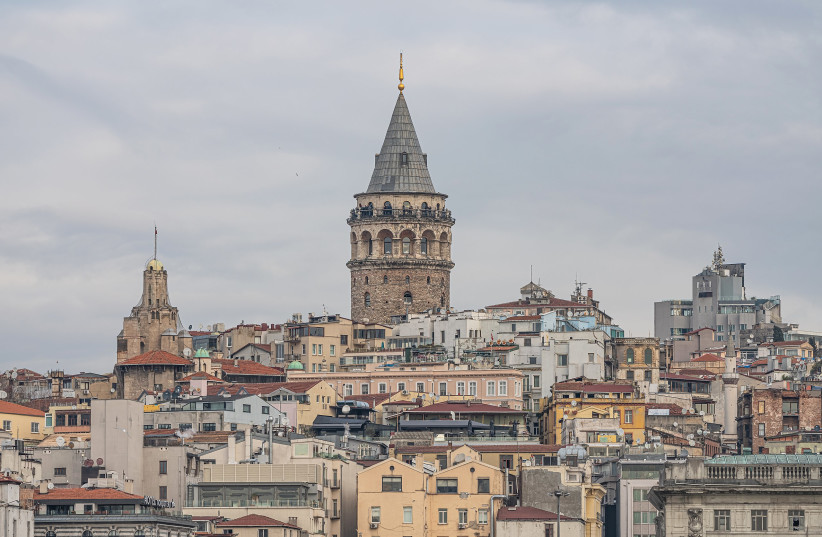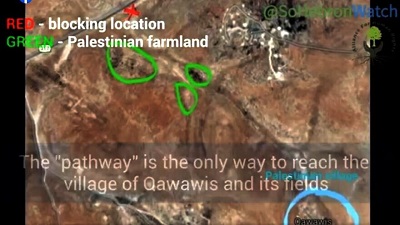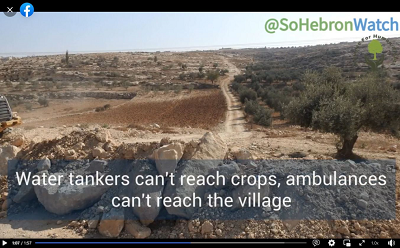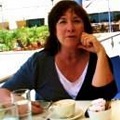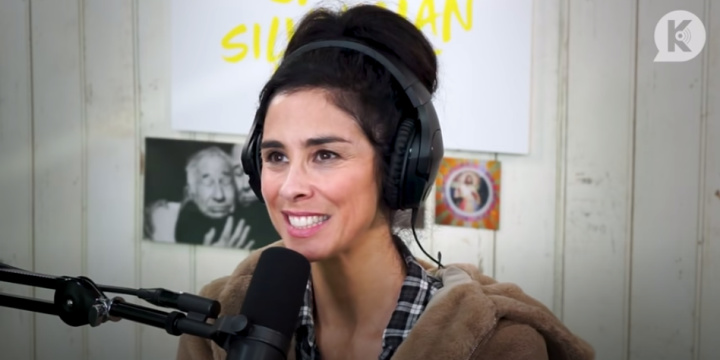 Feminism Changes the Study of Jewish Thought
Feminism Changes the Study of Jewish Thought
TAMAR ROSS
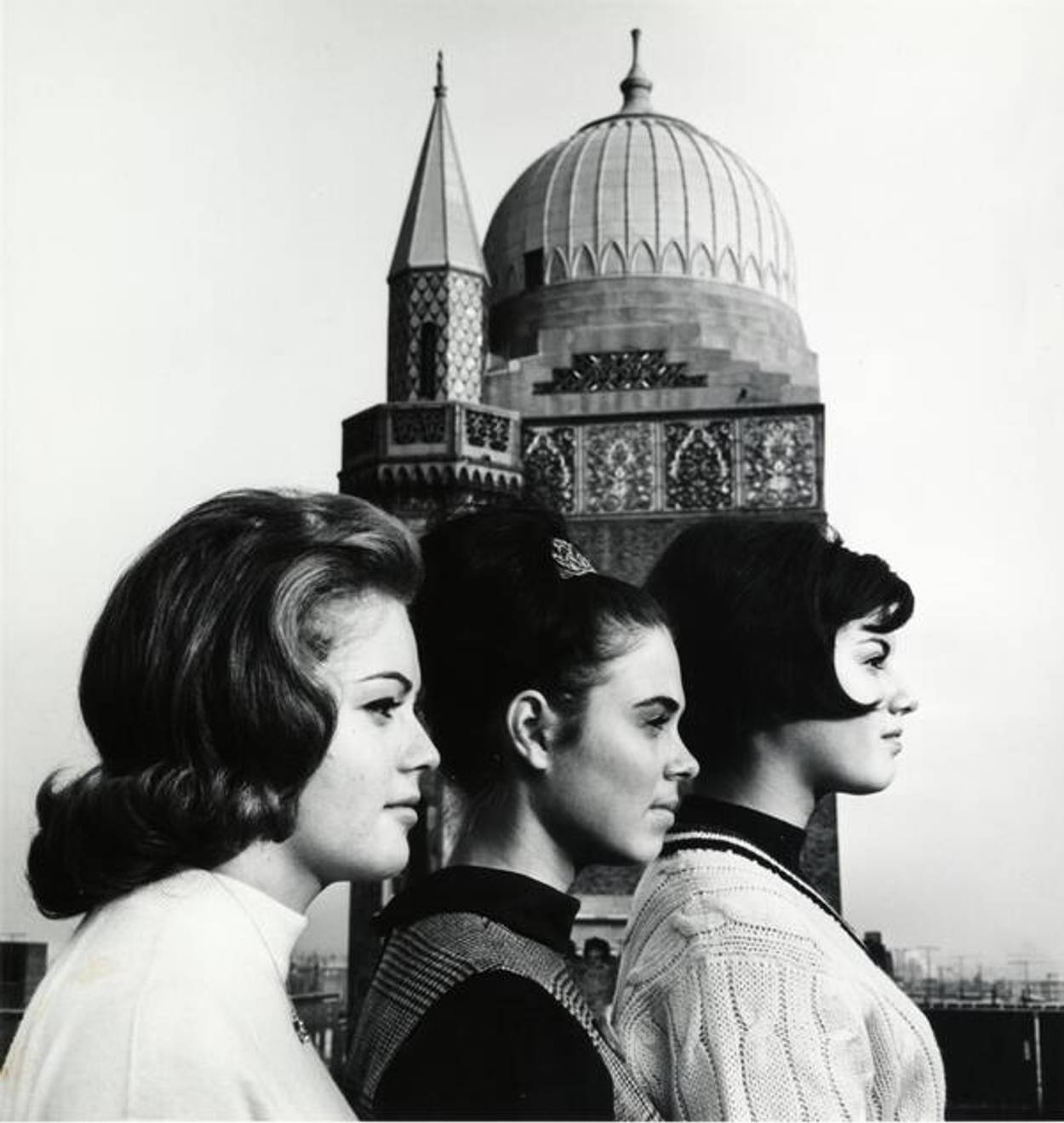 Students at Stern College, 1964 / YESHIVA UNIVERSITY ARCHIVES
Students at Stern College, 1964 / YESHIVA UNIVERSITY ARCHIVES
Will belief in the divinity of Torah ever be reconciled with the role of women in contemporary religious life?
Contemporary feminists may differ regarding the degree to which women’s distinctiveness and unique ways of knowing are inbuilt and essential or socially constructed, and whether it ought to supplement prevailing male conceptions of truth in some androgynous model, or (as some radical feminists suggest) override them completely. Nevertheless, all agree that the feminine perspective has something valuable to contribute, challenging prevailing male conceptions of truth as the irreducible, self-evident, and exclusive prism of reality.
The transformation that feminist consciousness has imposed upon academic scholarship (particularly in the humanities and social sciences) involves both critical and constructive aspects. On the critical level, the first step was to remove women’s invisibility as both producers and subjects of knowledge. Beyond promoting the professional advancement of female scholars and including the works of women in course syllabi, this meant documenting whatever evidence could be found regarding women’s relevance to the field in question.
At first, this attempt was conducted by studying women’s lives, experiences, and cultural productivity according to the categories of traditional male scholarship. In other words, women’s achievements were assessed according to male standards and in light of typically male pursuits. Eventually, however, it was understood that relying on these concepts and theoretical frameworks simply perpetuates women’s invisibility. In assuming that the prevailing division of gender roles is correct and natural, and basing research on questions that were originally formulated only by men, scholars often missed much of what was distinctive about women’s experiences.
Eventually, feminists began to understand that correcting the invisibility of women was not simply a matter of “add women and stir.” Making room for women’s standpoint and ways of knowing affects the qualitative nature of this knowledge as well. Viewing research from a feminist perspective influences the way that scholars define their subject matter, what questions should be asked, and how the information that is elicited should be interpreted and applied. This also bears methodological implications—such as attaching greater prominence to qualitative interviews and personal narratives rather than faceless statistics.
Yet whether purporting to rely on the objectivity of historical “facts” or on the somewhat murkier waters of philosophical reflection, applying strictly universal standards to a field that is partial from the outset in its commitment to Jewish interests is problematic. Introducing feminist sensibilities as an added prism simply intensifies the futility of any pretensions to neutrality. This is not to say that the conversation between feminism, philosophy, and Judaism is an impossible project, or of dubious value. Instead of being conceived as a discipline engaged in disinterested pursuit of knowledge for its own sake, a sizeable chunk of Jewish thought is now driven by women’s urge to resolve concrete issues that they face with regard to Judaism’s central beliefs and practices.
The seeds of this more practical type of confrontation between Judaism, feminism, and philosophy were first strewn in the 1960s, when several liberally inclined Jewish women, such as Betty Friedan and Gloria Steinem, joined what has come to be known as the second wave of American feminism. Initially, these women (well-educated but not necessarily in Jewish terms), didn’t link their activity to their religious or ethnic identities. But this started changing a decade later, when some such women began to connect their sense of discrimination and lack of equal opportunity to their standing in Jewish tradition—questioning the glorification of their roles as wives and mothers, their subordinate status in Jewish law, their lack of direct representation in Judaism’s canonic texts, their exclusion from religious leadership and active participation in the public domain, and so on.
Because the division of society by gender is such a fundamental component in the construction of Jewish tradition, the initial project of Jewish feminists was to reveal the extent to which sexism and the normative status of maleness underlie core assumptions of Jewish theology and practice and are embedded in the very grammar of the Hebrew language. The Torah addresses the male as the representative Jew. In later texts, the role and value of women are as a rule defined and limited even further by male interests and considerations. Women are not the intended audience and their experiences do not figure as a central topic worthy of discussion. In sum, traditional Jewish sources are the record of males looking out upon women as Other, reflecting male conceptualizations of women rather than flowing naturally from women’s own self-understanding.
Surveying responses to this critique is complicated because of the great denominational diversity characterizing Judaism in modern times. Outside the mainstream, there have been marginal attempts to dabble in neopagan, pre-biblical Goddess theology, or post-monotheistic spiritualism. Most Jewish feminists, however, have chosen not to break completely with their normative monotheistic heritage. Differences between Reform, Reconstructionist, Conservative, modern Orthodox and ultra-Orthodox (or Haredi) Judaism in accommodating the feminist critique are generally linked to ideological divisions regarding the divinity of the Torah, the immutability of Halacha (Jewish law), and the relative importance of each to religious life.
Haredi Jews who equate acceptance of traditional norms with submission to God’s eternal will generally regard feminism as an intrusive movement foreign to Judaism that creates disturbing tension, if not downright conflict, with hallowed beliefs and practices. To the extent that this type of opposition has provoked a philosophical response, it typically consists of arguments appealing to essentialist views of gender or to other culturally and politically benign features of patriarchy that might justify male hegemony.
Among the unconvinced, some more liberally inclined feminists have chosen to rely upon selective appropriation of egalitarian motifs that already exist in Jewish tradition, dismissing the rest as merely the negative influence of passing extraneous sociological forces. This has led to scholarly efforts at what I term “historical restorativism”—engaging in revisionist history in order to unearth evidence of more egalitarian practices of Judaism before its ideal standards became “sullied.” After the fashion of several noted Christian feminists, this approach has also encouraged developing new, more sophisticated exegetical methods in order to mine classical Jewish texts for precedents of women’s inclusion or hidden hints of protest against their subordination, and privileging whatever interpretation gives the text “the benefit of the doubt.” Such efforts, which strive to afford contemporary women full equality in matters of ritual practice, communal authority, and opportunity for religious leadership in accordance with what is normally extended to men, align with what is generally regarded as second-stage feminism. In other words, they aim to provide women with an equal share in the male pie.
A third, and more radical stage of Jewish feminist thought, contends that theology—rather than sociology—lies at the heart of the problem. Feminists adopting this stance are persuaded by internal connections that critics claim to have revealed between the monotheistic conception of God and male ways of thinking. To the extent that monotheism places men at the center, they argue, the world it constructs to make sense of human experience is also a world imbued with a male perspective. The entire shape of the religion, its basic paradigms, and perceptions of reality are especially suited to the male psyche, reflecting the hopes, needs, and fears of men living in a patriarchal framework.
Picturing an infinite God in exclusively male terms, according to this line of thought, is simply another form of idolatry. Moreover, binding worship to male-oriented conceptions of transcendence and to hierarchies of authority, dominion, and control leads to marginalizing female forms of spirituality which typically favor more spontaneous demonstrations of connectedness, intimacy, mercy, and love. Perhaps the most damning allegation raised in this context is the pernicious influence that the monotheistic notion of God exerts upon relations between men and women on the anthropological level. Third-stage feminists point out that religion does not merely create a certain social pattern; it also represents and reifies it, and thereby grants it legitimacy.
Students of Jewish thought persuaded by this level of critique, but still reluctant to part with their cultural identity as Jews, seek bolder forms of revisionism that can infuse the patriarchal formulae of tradition with “softer” feminine models. This includes scholarly efforts which might support the introduction of female imagery to the language of prayer, new woman-friendly rituals, and even new historical narratives designed to supplement and shape spaces empty of women in the Jewish collective memory. Despite its ultimately androcentric character, the mystic tradition of medieval Kabbalah and its later Hasidic offshoots, which feature a theosophy of embodied spirituality, rich feminine imagery of the Shekinah, and notions of reciprocal influences between the human and the divine, serve as an important resource for the revisionist project, as verified by the disproportionately high percentage of women scholars now engaged in this area of Jewish research.
A related issue raised by third-stage feminism is the extent to which Judaism’s appropriation of Halacha as the central medium for religious expression is the product of male ways of thinking. Judith Plaskow, an influential feminist theologian associated with the Reform movement, acknowledges the fact that law constitutes an important part of Jewish teaching, but questions its suitability considering the feminine preference for more fluid forms of spirituality. She has also voiced doubt regarding Halachic potential for remedying women’s status in tradition because of its systemic view of woman as Other. As against this skepticism, Rachel Adler, professor emerita of Jewish thought and gender studies at Hebrew Union College (also associated with the Reform movement), places a greater premium on Halacha as a necessary tool for preserving Jewish identity, but seeks proactive measures for breaking out of its authoritarian mode as a closed system of “obsolete and unjust rules.”
Precisely because modern Orthodoxy professes an ideological commitment to the Torah as a divine document and to the entire body of oral law as normative and binding, alongside engagement with secular culture as a positive value, the intensity of the challenge that this variety of Judaism faces in the conflict between Jewish demands for continuity and feminist conceptions of justice brings the stakes involved into greatest relief. Especially in its Israeli manifestations, I believe that modern Orthodox feminism (colored as it is by its own distinctive timing and sociopolitical setting), also currently serves as a hotbed for some of the most sophisticated and constructive contributions to Jewish thought to date. In true feminist fashion, I won’t attempt to defend these contentions from some detached “view from nowhere.” Rather I will speak from my own personal experience as a modern Orthodox woman living in the State of Israel who has been engaged for nearly a lifetime in the study and practice of Jewish philosophy.
Growing up in this environment, I certainly experienced occasion for frustration at being excluded from key male opportunities for learning and spiritual activity. My very choice to enter the field of Jewish thought was largely determined by the fact that I am a woman. Arriving in Israel as a teenage immigrant, I hoped to enrich my Jewish background by taking courses in that area in which the Hebrew University most prided itself: Jewish studies. Had I been a male, my religious interest in advancing my Jewish literacy would most likely have led me to a yeshiva or to the university’s Talmud department. But because these avenues were not open to me at the time, I turned instead to what was then a less exclusively male discipline—Jewish philosophy.
My interest in Jewish philosophy was not strictly academic in what was then the accepted understanding of the term. Beyond a wish to master this body of thought for its own sake, I was also on a spiritual quest, seeking to reinforce identification with a legacy of Orthodox Judaism to which I was committed by birth and upbringing. In order to make it my own, I felt the need to somehow translate its tenets and render them intelligible in the more universal terms of a broader philosophical and scientific milieu in which I was equally immersed. However, it never occurred to me at this stage to relate any personal gripes regarding my restricted Halachic status as a woman to my philosophical pursuits.
The entire shape of the religion, its basic paradigms and perceptions of reality, are especially suited to the male psyche, reflecting the hopes, needs, and fears of men living in a patriarchal framework.
Even as a novice, I was aware of potential clashes between internal and external views of religious doctrine. Nevertheless, my basic trust in both led to a conviction that the two could somehow be reconciled in a manner that would be mutually enriching. Initially, I was also very much affected by the approach of historical positivism that characterized Jewish scholarly research at the time I began my studies. The pride of this approach, which could be categorized as Jewish intellectual history, was its pretension to freedom from personal biases or ideological interests. In a broader sense, however, this historicism was related to more general notions of truth as grounded in ultimate, indubitable, self-certifying propositions. Truth-seeking consisted, therefore, in the attempt to capture existing, predefined verities in the physical or metaphysical world by reaching down to the firm and stable foundations on which they rested. The corroboration of truth-claims, be they scientific, historical, philosophical, or theological, was, therefore, to be conducted on some neutral territory “out there” and to be judged only in terms of their correspondence to these foundations.
As a matter of fact, reliance upon foundationalism (that is, the notion that the “edifice” of all human knowledge must inevitably emerge from the staunchly solid and universal foundation of reason) was and still is the general approach assumed by most of my Orthodox colleagues engaged in academia (particularly in the natural sciences), to the extent that they are exposed and troubled by rival truth-claims. Such proponents of this approach, generally known as Torah u-madda, typically understand both bodies of thought as vying in the same ballpark in the attempt to capture objective reality. Thus, they conclude, each discipline’s truth should be tested and measured by the same standards. In the event of clashes, one rendition must be correct and the other not.
In the tradition of Jewish thought, I found much support for the Torah u-madda position. Nevertheless, my exposure to the broader vistas of the social sciences and the humanities (history, archeology, comparative religion, literary criticism, and the like) eventually raised a host of qualitatively different questions that undermined a foundationalist view of religious truth-claims. After partaking of the forbidden fruit of this more comprehensive Tree of Knowledge, reliance upon a combination of ad hoc localized solutions to individual problems (anachronisms, inaccuracies, and contradictions in the biblical view of science and history; implausible descriptions of miraculous events; time- and culture-bound limitations in its theological and moral perceptions) seemed woefully inadequate to the task of responding to an ever-growing list of difficulties surrounding traditional accounts of the literary genesis of the Torah. The motley collection of patches applied in piecemeal fashion to various holes riddling the religious narrative began to lose their persuasive power when such flaws could be resolved so much more elegantly by one simple naturalistic explanation that left God and metaphysics out of the picture, a solution I was committed to rejecting.
Without consciously abandoning the Torah u-madda approach, I found myself increasingly drawn to precedents in Jewish thought that diverged from assumptions of direct correspondence between hard facts and the authoritative truth claims of religion. A chief source of inspiration was the thought of Rabbi A.I. Kook. As opposed to most scholars who focused on the nationalistic and political aspects of his thought, I was initially drawn to other features of his legacy: firstly, the fact that much of his writing took the form of a personal diary. Later I was also struck by his rejection of binary thinking as evidenced in his qualified attitude towards monotheism and its emphasis upon divine transcendence, his celebration of instinct, immersion in this-worldly activity and natural morality as indispensable conduits of spirituality, his ability to recognize the role of the historical process in the evolution of religious ideas, and his understanding that the main importance of religious truth statements was not their degree of correspondence with some external reality, but rather their influence on moral flourishing.
Years later I came to appreciate that most of these features are, from a gender perspective, characteristic of what has come to be associated with feminine ways of thinking. In retrospect their attraction for me may then have already been prompted by an intuitive sense that such predilections would somehow lead the way to a more comprehensive resolution of the incongruence between claims based on religious authority and those based on reason. But the direct impetus for working out such a resolution explicitly was a byproduct of the dramatic developments in the situation of Orthodox Jewish women that commenced a couple of decades later.
When Blu Greenberg, the acknowledged mother of modern Orthodox feminism, came out in 1981 with her groundbreaking book, On Women and Judaism, I found that many of the issues she raised overlapped with my own. However, her take tended to be phrased in political and sociological rather than theological terms. To the extent that she and other members of JOFA (the Jewish Orthodox Feminist Alliance, founded on her initiative) allowed themselves to proceed at all beyond acknowledging the predominantly male perspective of the Torah, they typically limited themselves to gingerly attempts at mitigating perceived injustices or anachronisms of the system on a practical level, from within the current boundaries of Halacha. In other words, this brand of feminism reached the second stage and went no further. Its unstated assumption was that the Torah may indeed have been phrased in terms of a patriarchal and pagan society, but it is not given to flesh and blood to change at will a tradition that is based upon a divinely inspired document.
Living in Israel, where Judaism is the majority culture and there is no clear division between church and state, limiting responses to conflict between religion and feminist concerns to select normative issues while ignoring their broader theological implications is far more difficult. Perhaps for this reason, the point that I came to appreciate was that—over and above considerations of justice or lack of a female perspective in biblical accounts of God, history, and the world at large, it is precisely in its unstated assumption about the nature of the Torah that the real problem of Orthodox feminism lies. In other words, the most troubling aspect of the feminist critique for modern Orthodoxy, as I saw it, was the more profound challenge that it posed to the central understanding upon which the authority of Jewish tradition has been based for millennia—that is, the very notion of a divinely revealed text.
If the Torah is from God, it should be above any human conditionality. But if the Torah’s understandings of self, world, and God so clearly reflect a patriarchal social order, how are we to view the source of such a Torah? Since the perspective of the Torah is so limited, can we really credit it with being divine? Is it really describing God in words that God has revealed to us, or are these words perhaps merely the projection of our own wishes or social systems onto the cosmos in a religious language that is socially shaped and culture-bound, and therefore not binding upon us? The problem intensifies when we realize that all rabbinic commentary and Halachic legislation is based upon the legal and narrative sections of the Torah, which were always regarded by tradition as stemming directly from God, and therefore above human conditioning.
Admittedly, such questions were raised in limited form even in Talmudic times and surely apply to many other areas where Jews nowadays feel the time- and culture-bound nature of the Torah and later traditional texts. But beyond pointing to any particular scientific moral, or theological difficulty in the contents of the Torah, the uniqueness of the feminist critique lies in the fact that it highlights an all-pervasive male bias so implicit and subtle that the innocent reader usually remains unaware of its existence. This ultimately drives us to ask: Can any verbal message claiming revelatory status really be divine? Because language itself is shaped by the cultural context in which it is formulated, and is of necessity bound to a particular standpoint, is a divine and eternally valid message at all possible?
With these questions, the clash between Orthodoxy and feminism is transformed from a dispute over the facticity of God’s revelation at Sinai to a debate over issues of general bias and the ubiquitous traces of cultural relativism. And it is here that the insufficiency of traditional panaceas comes into boldest relief. Allegorical interpretations of problematic passages in the Torah will not solve anything in this case. Nor will the suggestion that difficulties were deliberately planted into the text for didactic reasons. The male bias cannot be limited to specific terms or passages; it’s all over the text.
It thus appeared obvious to me that if the feminist critique in its Jewish context threatens to relativize and conditionalize the entire corpus of traditional Halacha, Orthodox Jews stand in desperate need of a contemporary theology that will accommodate the following two requisites. Firstly, the ability to acknowledge with a maximum of intellectual integrity the degree to which the Torah and Halacha at large are formulated in a time- and culture-bound societal mold. Secondly, to assert that this same Torah is nevertheless the eternal voice of God speaking to us, with every word of that voice equally holy and indispensable, and even to find theological meaning in the fact that our sacred and revered texts have been bound to the implicit patriarchal premises which feminist thinkers have been uncovering.
Relying on elements in the thought of R. Kook and rabbinic tradition at large, I began developing the idea that it is still possible to maintain belief in the divinity of the Torah despite its androcentric bias and other marks of human imprint by breaking down the strict dichotomy between divine speech and natural historic process. My grounding for this approach, which I termed “cumulativism,” was based on three assumptions:
First, if the Torah is to bear a message for all generations, its revelation must be an ongoing process; a dynamic unfolding that reveals its ultimate significance only through time.
Second, God’s message is not expressed through the reverberation of vocal chords, but rather through rabbinic interpretation of the texts (which may or may not be accompanied by evolutionary developments in human understanding) and through the mouthpiece of history. History, and particularly what happens to the Jewish people—the ideas and forms of life they accept as well as the process of determining those they reject—is essentially another mode of ongoing revelation, a surrogate prophecy.
Third, that although successive rabbinic hearings of God’s Torah sometimes appear to contradict His original message, that message is never replaced. On a formal level, the original Sinaitic revelation always remains the foundational cultural-linguistic filter through which these new deviations are heard and understood. The sanctified formulations of the canonic texts continue to serve as the absolute, rock bottom parameters of Jewish belief and practice, even though subsequent revelations may totally transform their original import, even turning them on their head.
Applying the notion of cumulative revelation to the problem at hand, I suggested that religious believers might regard the rise of feminism in our day, like other phenomena in the past, as a heaven-sent vehicle for the transmission of God’s word. Such an understanding does not involve devaluing or supplanting the previous norms of patriarchy. But to the extent that the feminist critique takes hold and informs the lives of the Halachically committed, traditionalists may understand women’s quest for equality as an updated expression of the divine will, indicating that we have outgrown earlier and more primitive forms of spirituality and are ready for a new, more sublime stage.
Not unexpectedly, my attempt to resolve the theological challenge of feminism by means of this dynamic understanding of revelation has received mixed reviews. It was welcomed enthusiastically by many members of the modern Orthodox community and others of a more liberal bent, who felt that such an approach offered them a way to reconcile deeply felt feminist sensibilities with their religious loyalties. Others regarded the move toward a more open-ended and naturalistic concept of revelation as giving up the traditionalist game from the outset, since the absolute and context-free character of the Torah has come to be so commonly accepted as the very essence of Orthodox Jewish theology. On the opposite end of the stick, dyed-in-the-wool feminists resisted considering patriarchy as even a temporary manifestation of divine providence or part of a gradual unfolding of divine intent.
Viewing the stakes of the argument from these variegated perspectives led me to a second, more radical theological stance. Drawing upon my previous forays into nonfoundationalist resources in Jewish and general philosophical thought, the urge to formulate a philosophically viable response induced me to appeal to a genre of postmodern theology that downplays the propositional import of religious doctrine in the life of the believer. According to this view, the primary interest of religious truth statements is not to discuss facts or establish history. Their main function operates on an entirely different plane: reflecting and fortifying a form of life and worldview to which we are inextricably bound by a combination of personal conviction, passion, and practical considerations.
While my view of revelation is deliberately fashioned in a manner that can coexist with universal naturalistic understandings, it certainly is not mandated by them. I personally prefer the notion of revelation through history and a nonpropositional view of religious truths for a variety of reasons. But my interest in introducing these ideas here is not to promote them specifically. Rather, it is to suggest that the contribution of feminism to Jewish thought cannot suffice with addressing parochial issues of Jewish continuity and practice. It also demands a confrontation with the inevitability of situated knowledge and diversity of opinion that feminism generates, and a response to this typically postmodern quandary in philosophically rigorous terms that bear universal provenance.
A version of this talk was delivered at the M.G. Levin Annual Public Lecture in Jewish Thought at Bar-Ilan University on Nov. 21, 2021.
Tamar Ross is a professor emeritus of Jewish philosophy at Bar-Ilan University.
Zawartość publikowanych artykułów i materiałów nie reprezentuje poglądów ani opinii Reunion’68,
ani też webmastera Blogu Reunion’68, chyba ze jest to wyraźnie zaznaczone.
Twoje uwagi, linki, własne artykuły lub wiadomości prześlij na adres:
webmaster@reunion68.com


